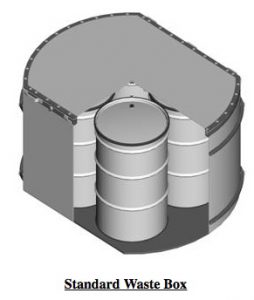
NukeWatch Joins Suit To Stop WIPP Expansion
On January 17, 2019, Southwest Research and Information Center (SRIC) and Nuclear Watch New Mexico (NWNM) filed an appeal in the New Mexico Court of Appeals to overturn the New Mexico Environment Department (NMED) approval of the Waste Isolation Pilot Plant (WIPP) Disposal Volume permit modification, which was issued on December 21, 2018.
The modification would allow expansion of WIPP’s capacity by approximately 30 percent and was issued over the repeated opposition of many New Mexico organizations.
“The modification is contrary to federal law, changes 20 years of practice in the WIPP Permit and operations, ignores the record in the proceeding including testimony in three days of hearings, and violates the New Mexico-DOE Consultation and Cooperation Agreement. The new Governor and NMED Secretary should not defend the unlawful modification in Court but should overturn it and require that historic practices be followed,” said Don Hancock of SRIC.
WIPP is operated by the Department of Energy (DOE) and Nuclear Waste Partnership, its contractor. “Rather than pursuing the permit modification, the Department of Energy should comply with the legal capacity limit and begin a public process to explain what additional waste it wants to bring to WIPP and how it intends to address the loss of disposal space that cannot be used because of the significant underground contamination,” said Scott Kovac of NWNM.
The SRIC-NWNM appeal is here
Objections from many organizations to the rushed permit process and the modification are here and here
NMED’s information about the modification is here
Other documents related to modification are here
Short Background
The New Mexico Environment Department (NMED) approved a Waste Isolation Pilot Plant (WIPP) permit modification request that changes the way waste volume is calculated to exclude empty space inside waste containers. For all of WIPP’s history until now, the total volume of the outer-most waste container was used as the amount of waste that counted against WIPP’s repository limit. All had agreed to calculating the waste this way since before WIPP opened. Before this change, as one example, if four cylindrical 55-gallon waste drums were placed into a square waste box, the total amount of waste was counted as the volume of the outer square waste box. This change would allow the waste to be counted as the volume of four 55-gallon drums. This would ultimately allow more waste to be placed in the underground nuclear waste repository in southeast New Mexico.
The permit request was made jointly by the U.S. Department of Energy and WIPP operating and managing contractor Nuclear Waste Partnership, LLC, was approved by NMED Secretary Butch Tongate on December 21, 2018, which was only days before Gov. Susana Martinez left office.
In January 2018, DOE and its contractor, Nuclear Waste Partnership, a limited liability corporation, proposed to modify the NMED’s hazardous waste permit to allow a new way to count the amount of waste disposed of at WIPP. Since then, there has been a 45-day public comment period, negotiations between stakeholders, DOE and NMED, and a three-day public hearing in Carlsbad.
In 1992, Congress passed the Land Withdrawal Act, which allows for the disposal of up to 6.2 million cubic feet of transuranic, or plutonium-contaminated, radioactive and hazardous waste generated from nuclear weapons research, development, and manufacturing.
This could be the first step in expanding WIPP’s mission to store other kinds of waste.
